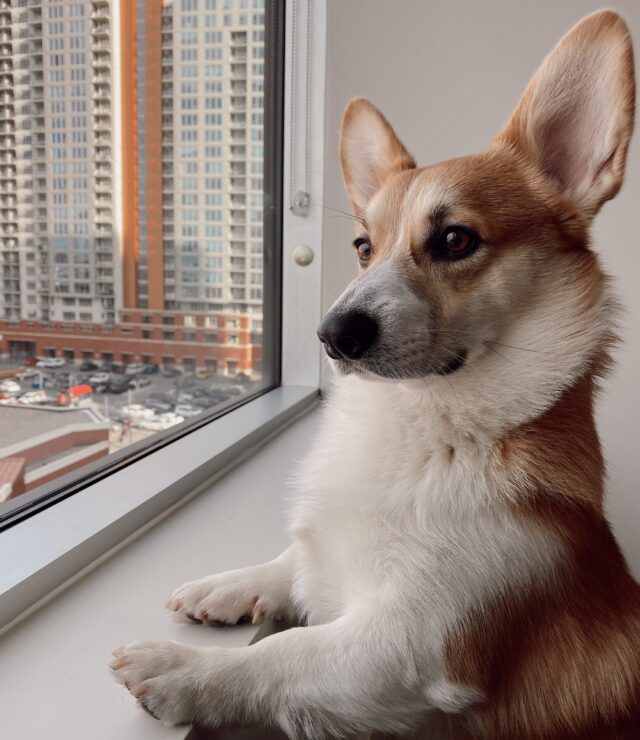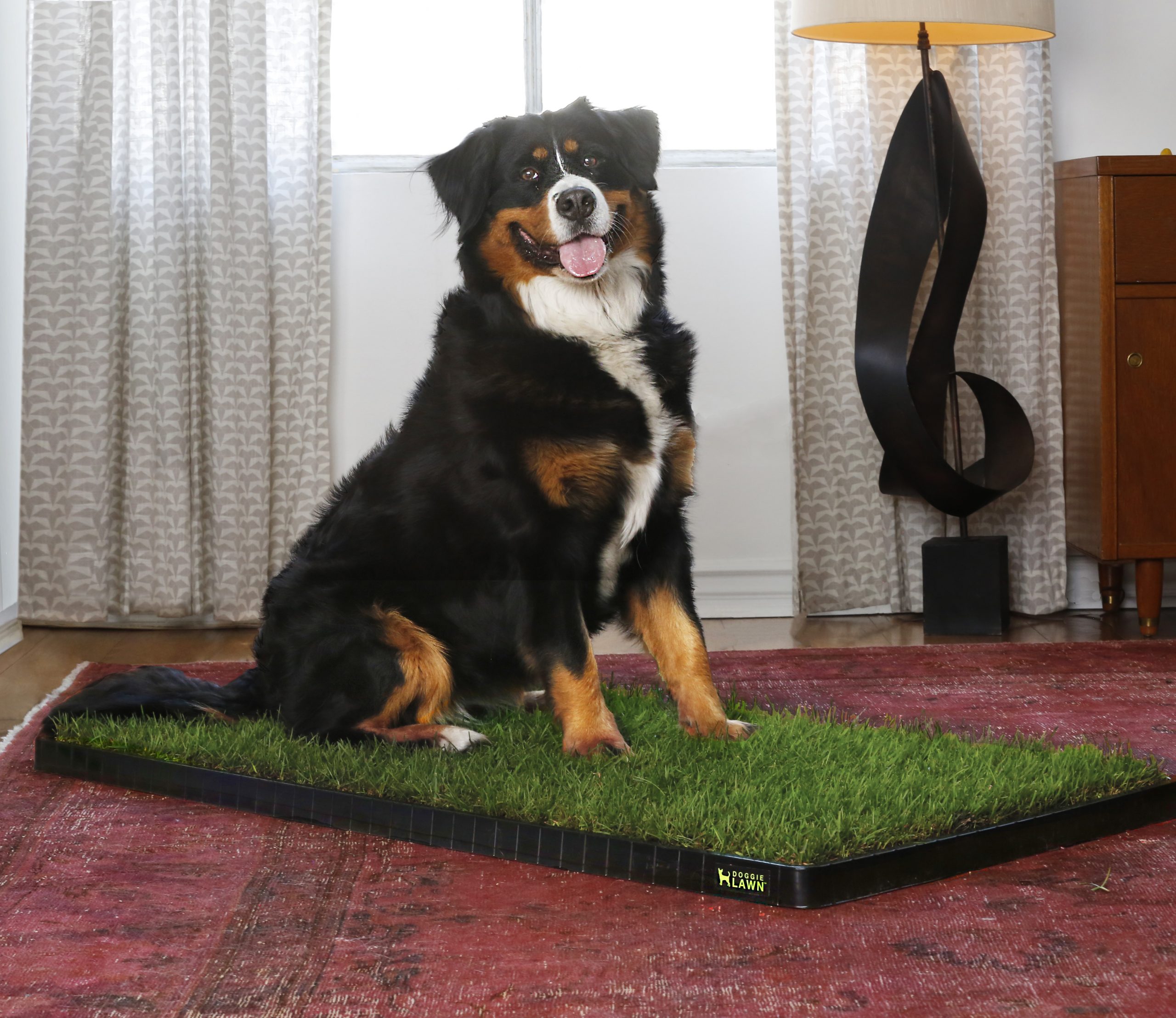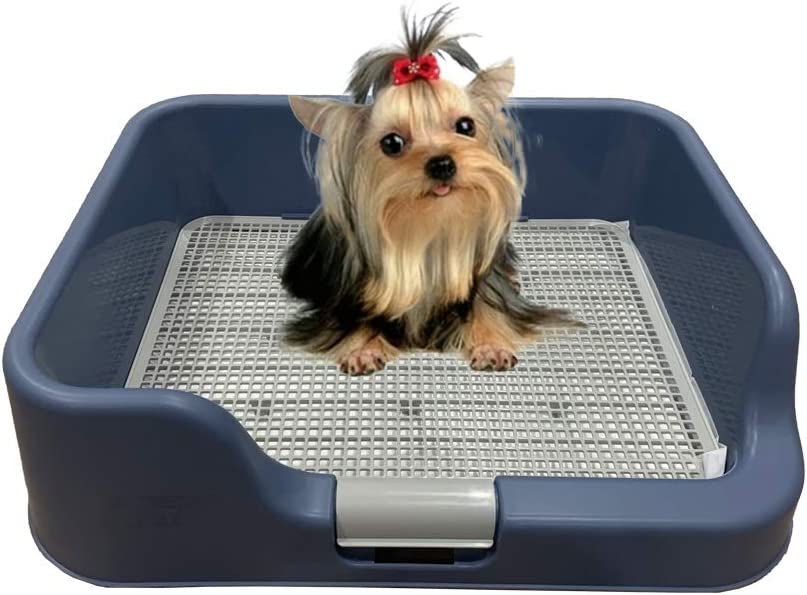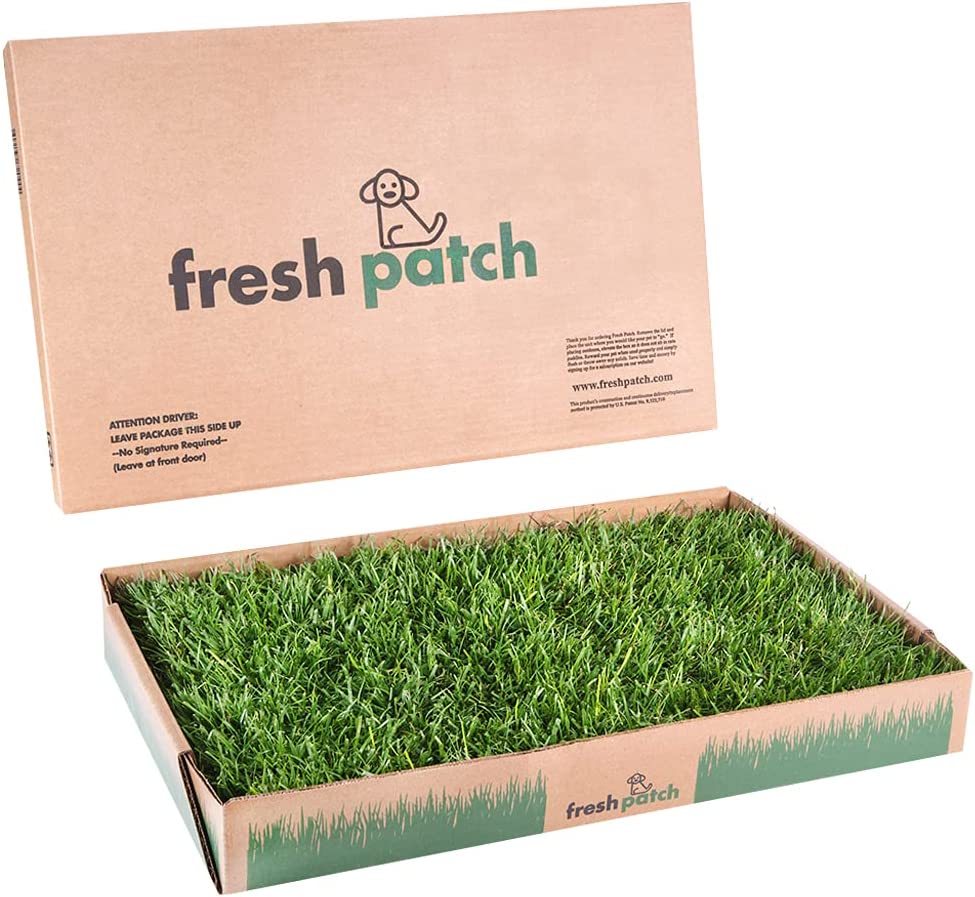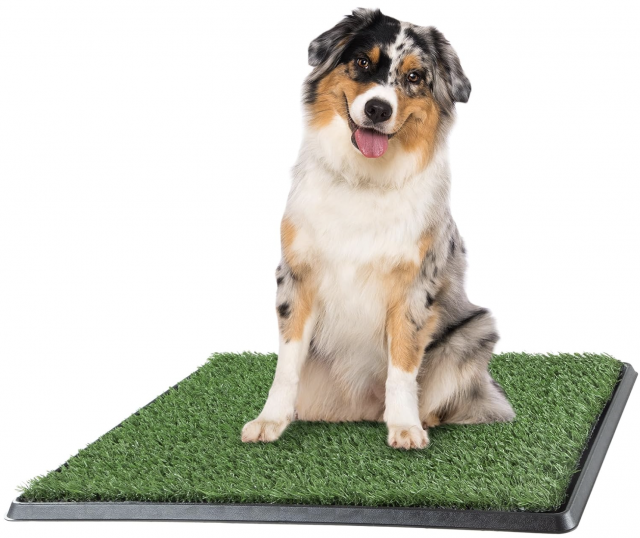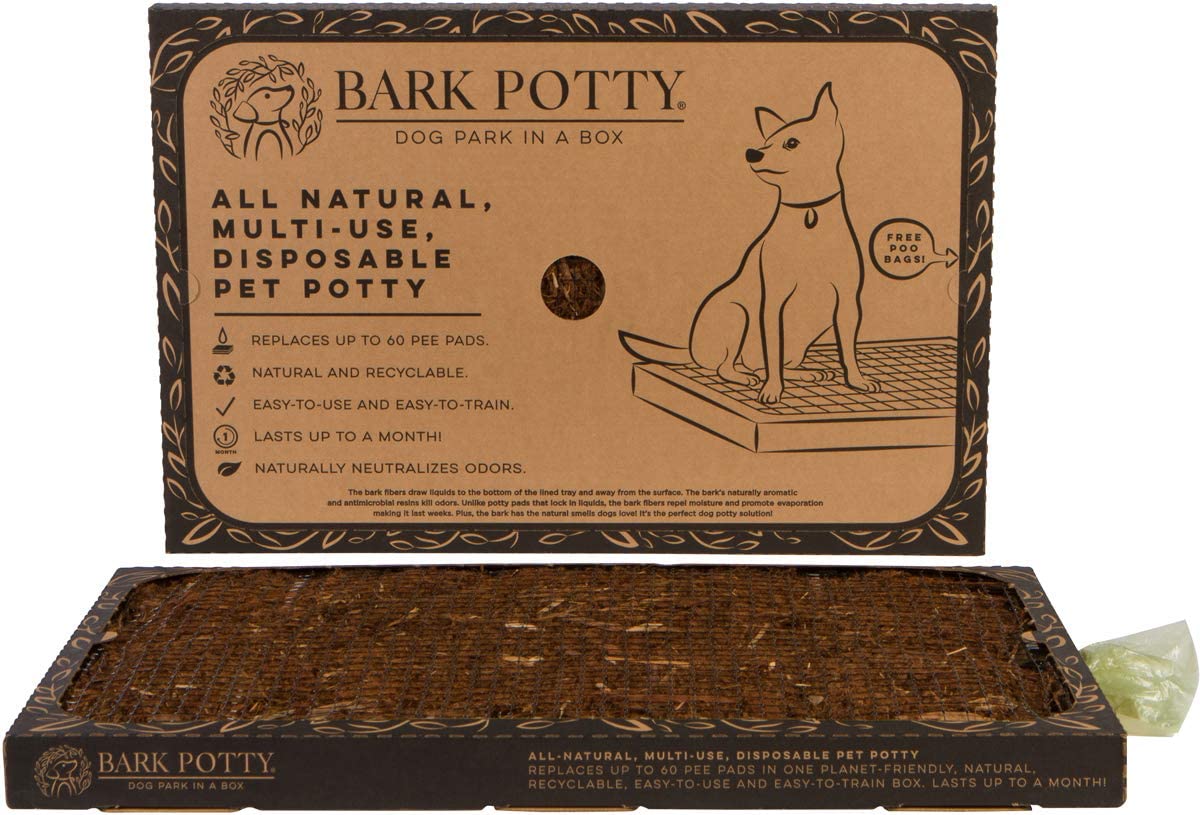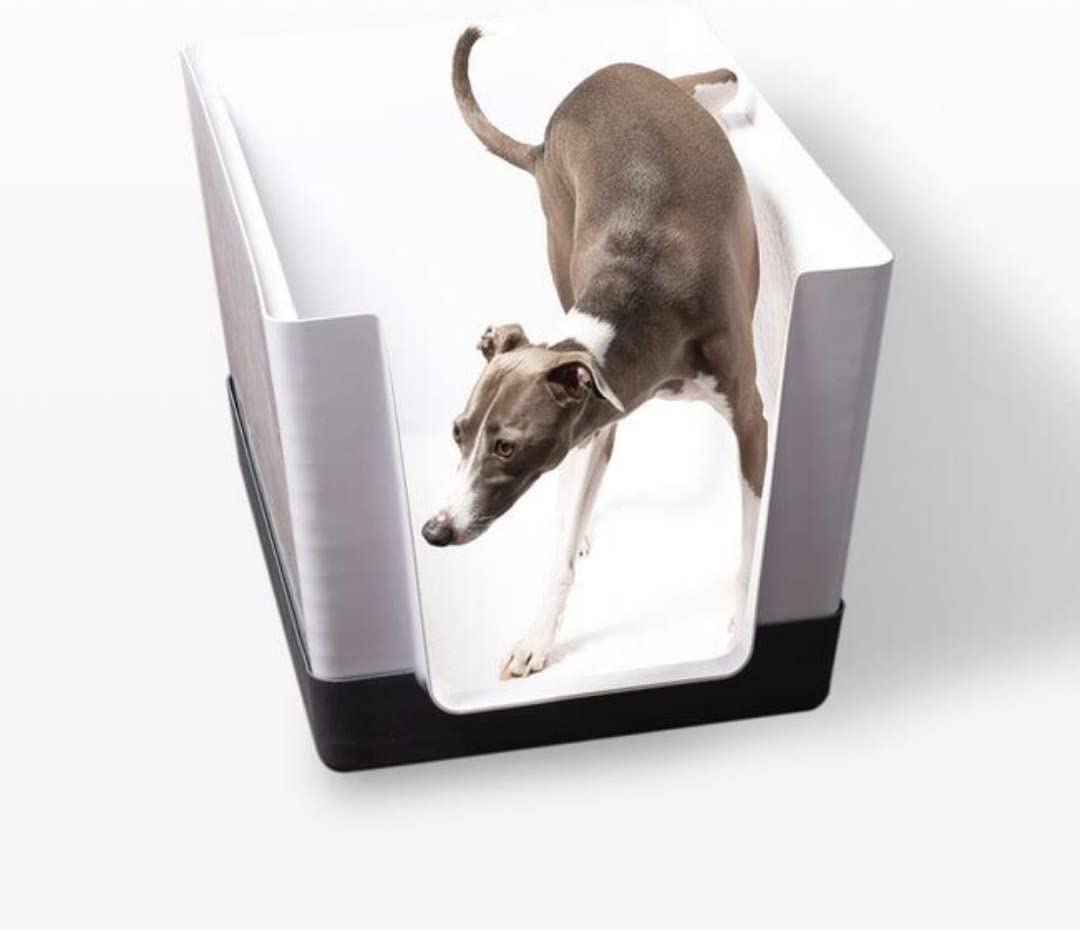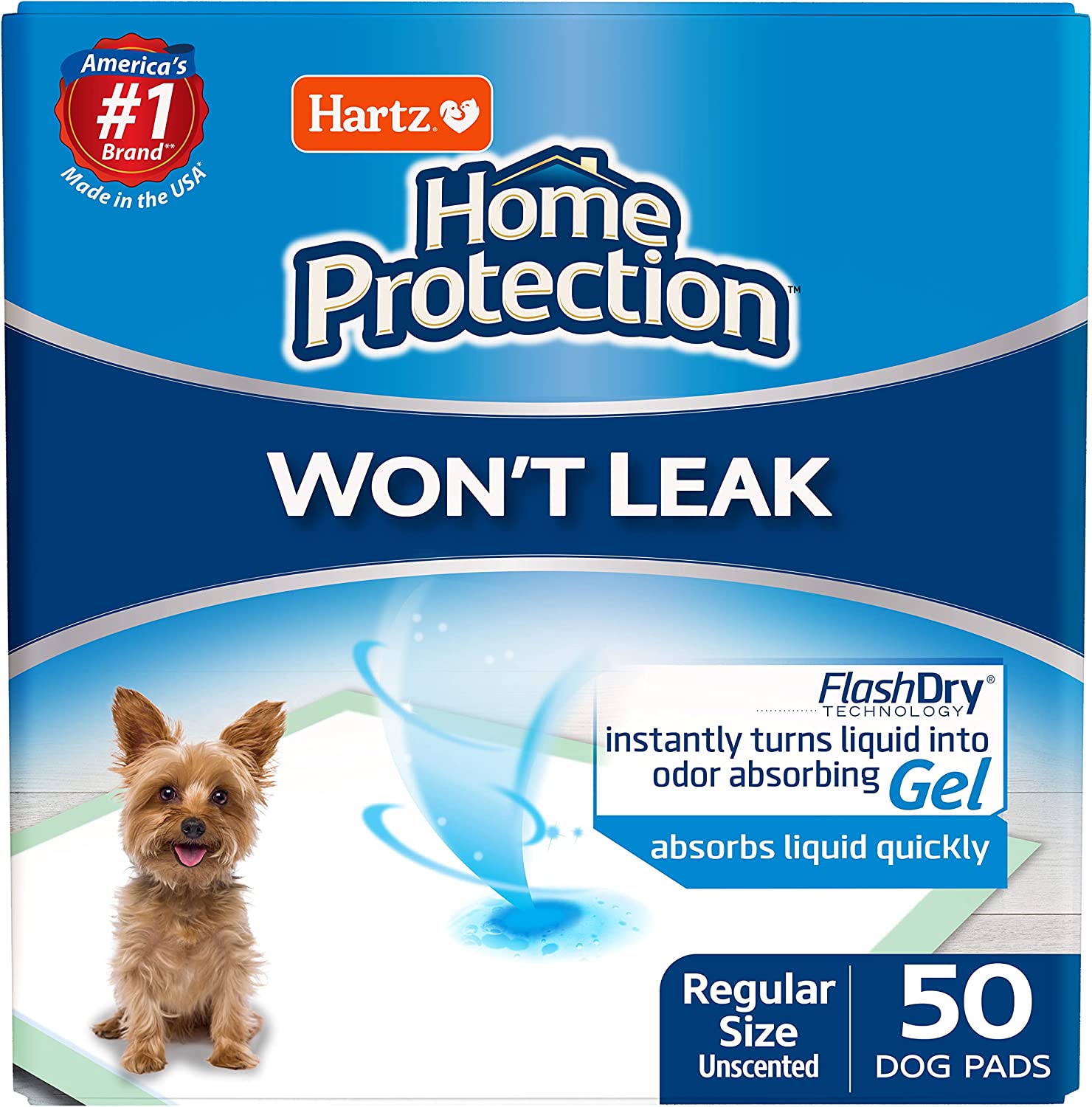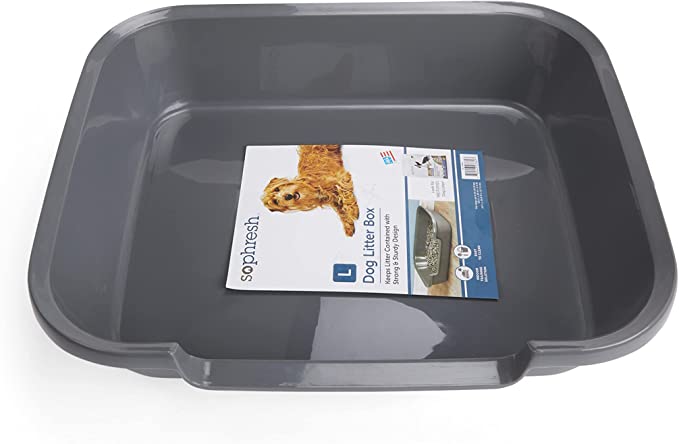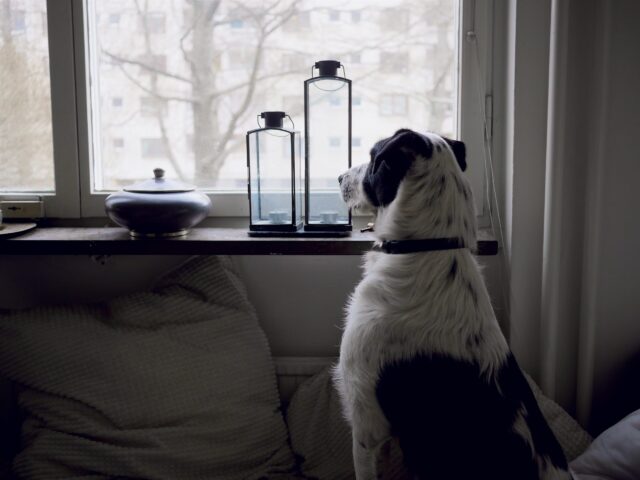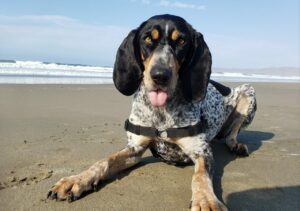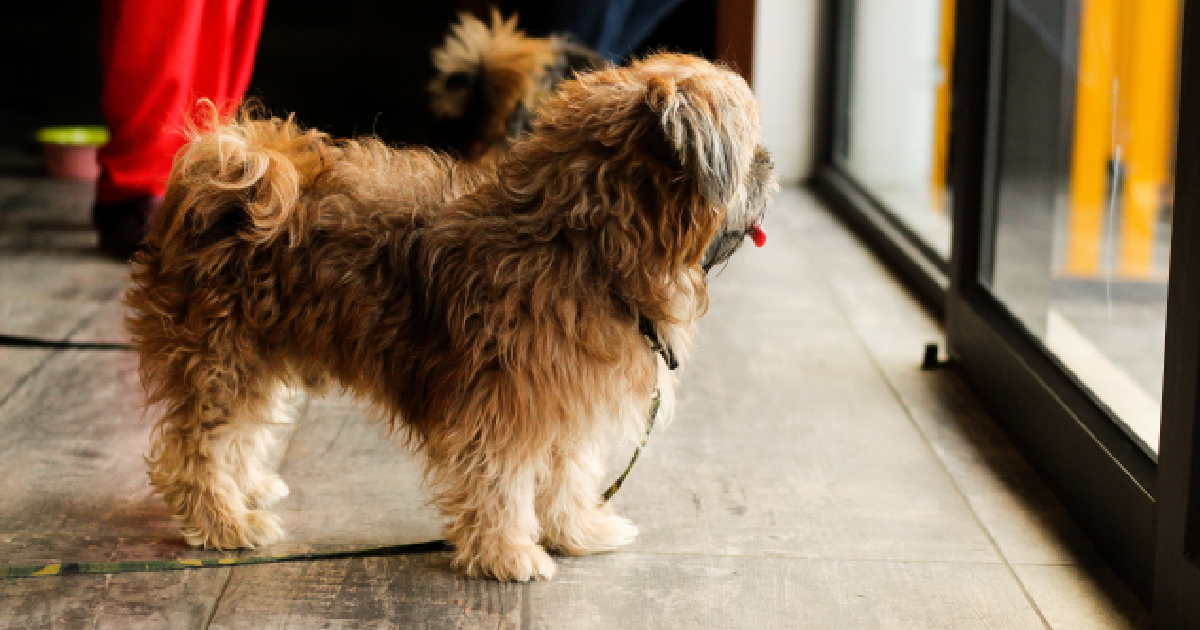
iHeartDogs is reader-supported. When you buy via links on our site, we may earn an affiliate commission at no extra cost to you.
The best indoor dog potty will give your pup a secure place to do their business when getting outside is kind of tricky. Whether you live in an apartment or condo where scads of inviting green grass aren’t plentiful, or you’re training a puppy, these dog potties can provide a simple solution that takes the stress out of going for both you and your dog. And if you have a senior or dog with mobility issues, indoor potties can be a lifesaver too.
But whatever reason you’re potty shopping, we’re here to help. There are several factors to consider when making your choice, and our buying guide explores them all, so study the list and then read on to learn what you need to know about selecting the best indoor dog potty for your pup! And keep in mind the right indoor dog potty for your dog will depend on their individual needs and preferences, but our list includes a wide array of styles and choices to suit all dogs.
Our 11 Favorite Options for the Best Indoor Dog Potty
1 – BrilliantPad Smart WiFi Enabled Indoor Dog Potty
Potty Training?: BrilliantPad has the solution!
Take potty time high-tech and ditch dirty, smelly pads for good! BrilliantPad is an app-based self-cleaning dog potty that alerts you when your dog does their business. Replacing a dirty pad is easy – one button touch will always give your pup a clean potty spot. The machine wraps solid and liquid waste, locking in odors for a cleaner, fresher home.
The app also provides critical insights to help monitor your dogs health. The refillable roll contains premium pads made from 5-layers of ultra-absorbent, durable, and decomposable material. Each roll provides 21 full advances, which is approximately equivalent to 50 large pads. BrilliantPad is a better value, and worth it for the unmatched convenience, time-saving clean-ups, and most of all, superior health for your pup!
Pros:
Cons:
2 – DoggieLawn
DoggieLawn is an innovative solution for pet parents, bringing the outdoors inside with a creative indoor potty system that uses real grass. This sets it apart from other similar products, providing an authentic experience that can aid in housetraining and reduce confusion for dogs. The availability of this product in multiple sizes is a commendable feature, providing options for both small breed puppies and larger adult dogs.
In addition to its size range, DoggieLawn offers a convenient subscription service, ensuring fresh grass is delivered to your doorstep on a regular basis. This feature is particularly useful in maintaining a clean and odor-free environment, as regular replacement prevents the grass from becoming overly soiled and unsanitary. It also eliminates the need for constant store visits or online reordering, which can be a significant convenience.
Pros:
- Real grass promotes natural behaviors and training
- Multiple sizes fit different needs
- Subscription service for ease
- 24/7 customer service
- New customers receive a goody bag
Cons:
- Real grass may require more maintenance than artificial alternatives
- Subscription service could be expensive in the long run
- May not be suitable for dogs with specific allergies to grass types
3 – PS Indoor Dog Potty Tray
This plastic dog potty protects floors by holding pee pads inside the tray so any leakage is caught inside. It’s molded with high sides to help minimize mess for poor aimers. And the perforated grate allows pee to flow down onto the potty pad inside and snaps into place so it won’t wobble. The grate also stops dogs from tearing or digging at used pads.
Pros
- Great potty for puppies and small dogs
- Made from safe plastic that contains no dangerous chemicals
- Holds pee pads in place
- Easy to clean urine from tray
Cons
- Feces can get stuck in grate
- Very small size
4 – PetSafe Pet Loo Portable Dog Potty
Great for apartment living and working dog parents, this indoor dog potty system features a synthetic grass mat that can be easily cleaned and a disposable Pee-Pod that lets you easily toss waste without touching any mess. Use PetSafe’s Wee Sponge powder in the Pee-Pod to absorb and solidify the liquid waste for a hassle and odor-free disposal. When it’s time to replace your Pee-Pod, simply throw it away and insert a new one. Solid waste can be scooped up easily. The Pet Loo is also designed so two or more units can be easily placed together for a larger elimination area if you have more than one dog.
Pros
- Easy to clean
- Good for small spaces
- Pee-Pod holds 2 liters of liquid
- Wee Sponge powder turns urine into gel
- Reduces odor
Cons
- Expensive
- Grass pads have to be replaced every 6-12 months
5 – Fresh Patch Standard
Get your pup some real grass to do their business on! Fresh sod mat helps dogs learn faster by associating their indoor potty with the grass they go on outside. This USA-grown grass is grown hydroponically for dirt-free and safe use inside. And it arrives in a sturdy, leak-resistant container. To use, just open the package and set it in your dog’s inside potty spot.
Pros
- Nontoxic, dirt-free grass
- Available in sizes for all dogs
- Absorbs liquid quickly
- Easy to use
Cons
- Some reviewers report container leakage
- Can get expensive
6 – PETMAKER Artificial Grass Puppy Pee Pad for Dogs
This three-piece system features a synthetic grass mat for pups to go on, a detachable grid tray that drains liquid away from the top, and a bottom base tray to keep the mess contained. The low profile makes it easy to step onto for puppies and senior dogs. This best indoor dog potty option is also sold in a four-layer system, and replacement pads are available too.
Pros
- Low to the ground for easy access
- Bottom tray cleans easily with soap and water
- Good for potty-training puppies
Cons
- Grass pads can wear out quickly
7 – Bark Potty
The idea here is to mimic natural ground with a proprietary bark blend that naturally neutralizes odor by absorbing liquid and breaking it down. It’s like your pup can visit the park or woods to do their business while hanging out at home. But don’t worry about tree bark litter everywhere, as mesh netting over the top prevents dogs from kicking up the material and making a mess. Plus, this dog potty pad lasts up to a month and replaces up to sixty pee pads.
Pros
- Available in two sizes to accommodate large dogs
- No chemicals or preservatives
- Naturally microbial tree bark
Cons
- Can be expensive with regular use & multiple dogs
- Some dogs may chew box and bark
8 – Doggy Bathroom Dog Litter Box
Offer your dog a private spot to do their business with an indoor dog potty with high walls that allows male dogs to hike their leg. This dog litter box means no more bad aim messes and can be used with pee pads or dog litter. Plus, it has clips on the walls to hang pee pads to catch that hiked leg stream. While it’s a large potty system, the unobtrusive, clean design and color options can help it blend in some. The entry lip is only 2.75 inches high, so it’s easy for small and senior dogs to enter.
Pros
- Includes 50 adhesive 27” x 19” pee pads
- Contains dog mess well
- Easy to clean
- Can be used with cats
Cons
- Expensive
- May be hard to fit in smaller spaces
9 – Hartz Home Protection Odor Eliminating Gel Dog Pads
No list of dog potties would be complete without pee pads! And Harz’s odor-eliminating pee pads will make your life less of a mess where your dog is concerned because once your dog urinates on these, the liquid instantly turns to gel to prevent floor leaks. This also means no spreading puddles so pads can be used more than once. They’re constructed with six layers for maximum absorbency, including a waterproof bottom layer to protect floors.
Pros
- Great for home and travel
- Inexpensive solution to messes
- Available in lavender-scented and unscented
- Multiple sizes available
Cons
- May need bigger size for large dogs
10 – Green Lifestyle Reusable Dog Pee Pads
Tired of tossing disposable pee pads? Try washable pee pads to save some cash, and stop filling up your garbage can. These green-friendly potty pads are thick, soft, and multilayered to capture lots of liquid and soil. The cloth on top is quilted and soft on dog paws. You can also line your furniture with them for dogs who leak or are nervous urinators.
Pros
- Thick and highly absorbent
- Reinforced seams for no fraying
- Soft on dog feet
- Choose from multiple colors
- Fast drying
Cons
- Can be messy to deal with for cleaning
11 – So Phresh Dog Litter Box
A dog litter box is just what it sounds like! You can use this convenient pan with dog litter or potty pads. The sides are raised to keep the mess in, but the 5-inch-high walls and three 1/8-inch entry lip are easy to step over. It’s great for bad weather, apartments, and training your pup where to eliminate appropriately.
Pros
- Durable plastic that won’t crack
- Works well for large cats and senior cats too
- Cleans easily with soap and water
Cons
Buying Guide: What Factors to Consider When Choosing The Best Indoor Dog Potty
Size
The size of the indoor dog potty is important to consider, as you want to make sure it’s large enough for your dog to comfortably use it without having accidents. And in addition to ensuring the potty is big enough, think about how many dogs will use it. In this case, too much space is way better than not enough. Your floors will thank you!
Potty Types
When choosing the best indoor dog potty, you’ll need to decide what type will please your pup the most. Indoor potties usually fall into these types:
- Artificial grass pads – often housed in a plastic tray with multiple layers to help absorb urine
- Real grass – a swath of natural turf shipped to your home in a lined box or can be placed in a plastic tray
- Automatic self-cleaning dog potty – a high-tech solution that does the work for you; typically connects to your phone via app for monitoring
- Litter boxes – like cat litter boxes, used with or without the litter; can also be lined with pee pads; an ideal indoor dog potty for small dog breeds
- Pee pads – while not technically a dog indoor potty system, pee pads serve well but can leak and overflow with repeated soiling
- Washable pee pads – instead of throwing them away, reusable pee pads can be tossed in the washing machine and used again
Also, think about the material of the indoor dog potty. Some materials are more durable and long-lasting, while others may be more absorbent and easier to clean. Hopefully, you can score a jackpot with all these factors!
Odor Control
An indoor dog potty can produce unpleasant odors if not cleaned thoroughly and regularly. Think about how smelly our toilets can get without regular cleaning, and they flush! Consider a potty with an odor-neutralizing capacity to help reduce any odors.
Placement
When considering where to place the indoor dog potty in your home, you’ll want to choose a private area with good air circulation that’s well away from your dog’s sleeping and eating area. And keep in mind a large indoor dog potty may be hard to hide in small spaces. Small indoor dog potties can be more discreet, but you may find yourself cleaning up overflows or misses if the potty isn’t big enough for your dog. Also, think about the flooring where you’ll put the potty. Can your floor handle a wet mess in the event of leaks?
Indoor Dog Potty FAQs
Can you potty train a dog indoors?
Yes, you can potty train a dog indoors using an indoor potty or pee pads. Indoor potty training might be ideal for puppies who need constant access to a designated potty area, as well as for dogs who are unable to go outside or for dog parents who live in apartments. The key is to teach your dog to associate the indoor potty with the act of eliminating through conditioning and positive reinforcement. And when potty training your dog, always remain patient and consistent. It can be a frustrating process, but your dog will appreciate your understanding.
RELATED: 15 Easiest Dogs To Potty Train
Do indoor dog potties work?
Indoor dog potties can work well in certain situations and for certain dogs. These potties can be helpful for dog parents who live in apartments or urban areas where it may be difficult or inconvenient to take their dog outside frequently, particularly in bad weather. These dog toilets can also be helpful for older dogs, those with mobility issues, or dogs and puppies that require constant access to a designated potty area.
In addition to convenience, indoor dog potties also have the added benefit of being more hygienic than traditional puppy pee pads, as they are often made with durable materials that resist leaks and absorb odors. Some potties even have integrated drainage systems that make it easy to dispose of waste and clean the potty.
However great they are for some dogs, it’s important to note that indoor dog potties may not work for all dogs. Some dogs may prefer to relieve themselves outside. Additionally, using an indoor potty for your dog does not replace outdoor exercise or access to fresh air, which are critical for a dog’s physical and mental health.
Ultimately, whether or not an indoor dog potty will work for your dog depends on their individual needs and preferences. It’s important to carefully research and consider different options before purchasing. And be sure to continue monitoring your dog’s behavior and needs over time.
Do indoor dog potties smell?
Indoor dog potties may produce unpleasant odors if not cleaned regularly and thoroughly. But even when you’ve washed them, the potty business can be smelly, which is why some potties are designed to minimize odors. They may have built-in drainage systems or be made from odor-absorbing materials and are easy to clean. Frequent cleaning of the potty is also crucial in preventing odor buildup. But by choosing the right type of indoor dog potty and practicing good cleaning habits, you can help minimize any potential odor issues.
How do you clean an indoor dog potty?
Always clean your dog potty according to manufacturer directions, but you’ll find these are the common steps of how to clean an indoor dog potty:
- Scrape or scoop any solid waste from the potty.
- Empty the urine tray into a toilet or down the drain.
- Clean the potty mat and tray with disinfecting soap and water.
- Rinse thoroughly.
- Allow dog toilet to dry completely before putting it back together.
Where is the best place to put an indoor dog potty?
The best place to put an indoor dog potty varies depending on your living situation and the layout of your home. Generally, the indoor dog potty should be placed in an area that is easily accessible to your dog but not in a high-traffic area that causes disturbance. Here are some tips to help you find the best location for your indoor dog potty:
- Choose a private location – Select a relatively private, quiet space away from your dog’s bed and food/water bowls.
- Consider the flooring – Avoid placing the potty on carpet or other absorbent surfaces, as they may be difficult to clean and may hold unpleasant odors. Instead, consider a hard floor surface such as tile or linoleum.
- Find a space with good ventilation – Good air circulation is vital to keeping the area fresh and odor-free. A room with good ventilation or an open window can help move fresh air throughout the space.
- Out of sight – If you live in a small apartment with limited space, you may want to place the indoor potty in a less-visible location, such as a closet with a door left open or under a taller table. This can help maintain the appearance of your home while providing a private potty area for your dog.
- Accessibility – Place the indoor dog potty in an area that’s easy for your dog to get to, especially if they’re older or have mobility issues.
How do I get my dog to use an indoor dog potty?
Here are some tips to help your dog use an indoor dog potty:
- Introduce your dog to the potty – Show your dog where the indoor dog potty is and encourage them to check out the new potty on their own to help them get used to it and feel more comfortable.
- Use positive reinforcement – When your dog uses the indoor dog potty, praise and treat them. This will help them associate using the potty with good things, making them more likely to use it in the future.
- Consistency – Just like with outdoor potty training, consistency is vital. Take your dog to the indoor dog potty regularly, especially after meals, naps, and playtime.
- Give your dog time – Remember, it may take time for your dog to use the indoor potty. Be patient, and don’t get discouraged if your dog has accidents at first. Stick to your routine and reinforce good behavior.
- Reinforce cues – Use a specific cue, such as “potty” or “go pee,” when taking your dog to the indoor dog potty. Over time, your dog will learn to associate the cue with the behavior.
- Clean up thoroughly – Make sure to clean up any accidents thoroughly. This will help reduce odors and clarify where your dog should be eliminating.
Remember that using an indoor dog potty can be a valuable tool for busy dog parents or dogs with difficulty going outside. Still, it’s important to continue taking dogs for walks and outdoor exercise.
Are indoor dog potties a good idea?
Indoor dog potties can be a good idea in certain situations. For dog parents who live in apartments or dogs that have difficulty going outside, they’re a great aid. But they’re not a universal solution for all dogs and situations.
Here are some factors to think about if you’re considering getting an indoor dog toilet:
- Convenience – Indoor dog potties can be convenient for families who may not have easy access to outdoor spaces.
- Health – For seniors or dogs with mobility limitations, an indoor potty can help prevent accidents in the home.
- Weather – During inclement weather, such as rain or snowstorms, an indoor dog potty can be a useful alternative to taking your dog outside.
- Behavioral issues – For dogs that have issues with separation anxiety or other behavioral problems, an indoor dog potty can be a helpful tool in preventing destructive behavior or accidents. On the other hand, there are some potential drawbacks to using an indoor dog potty, such as training them to use it and keeping up with cleaning.
Can I make my own indoor dog potty?
Yes, you can make your own DIY indoor dog potty using just a few materials and following a few simple steps.
Materials:
- Large plastic tray (found at hardware stores)
- Artificial grass turf or pee pad
- Scissors
- Ruler
- Measuring tape
- Pet-friendly disinfectant spray
Instructions:
- Purchase a large plastic tray that can hold the turf or pee pads. The tray should be big enough for your dog to eliminate in comfortably.
- Cut the artificial turf or pee pad to fit the tray’s dimensions or place them directly into the tray.
- Place the tray in a convenient location for your dog but away from their sleeping area.
- Using treats and positive reinforcement, encourage your dog to use the potty.
- When your dog eliminates on the potty, use dog-safe disinfectant to clean and refresh the area.
Remember that while creating your DIY indoor dog potty can be a great option for saving money, ensure you only use materials that are safe and comfortable for your dog. Also, regular cleaning and sanitation are necessary to keep your dog healthy and your home clean.
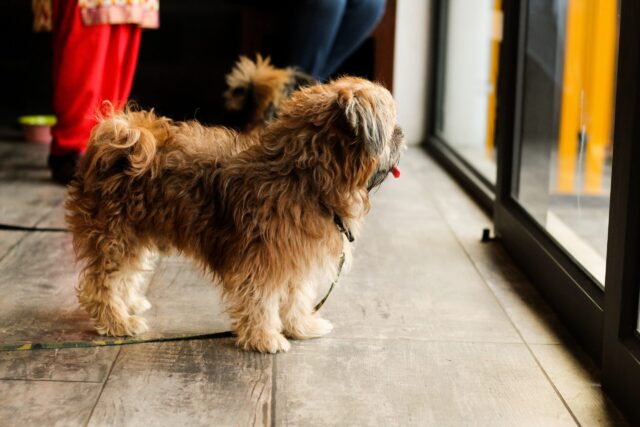
Finding the best indoor dog potty takes some time and thought, as getting it right for your dog is essential. Potty time shouldn’t be stressful, and the right dog potty system will make elimination easy for them while cleaning and refreshing will be simple for you. Hopefully, our list and informational guide will make buying easy too!
